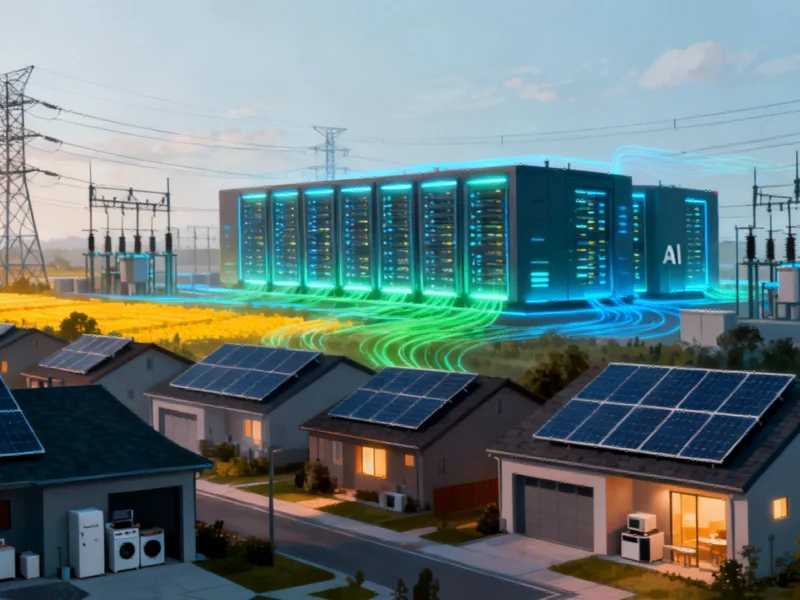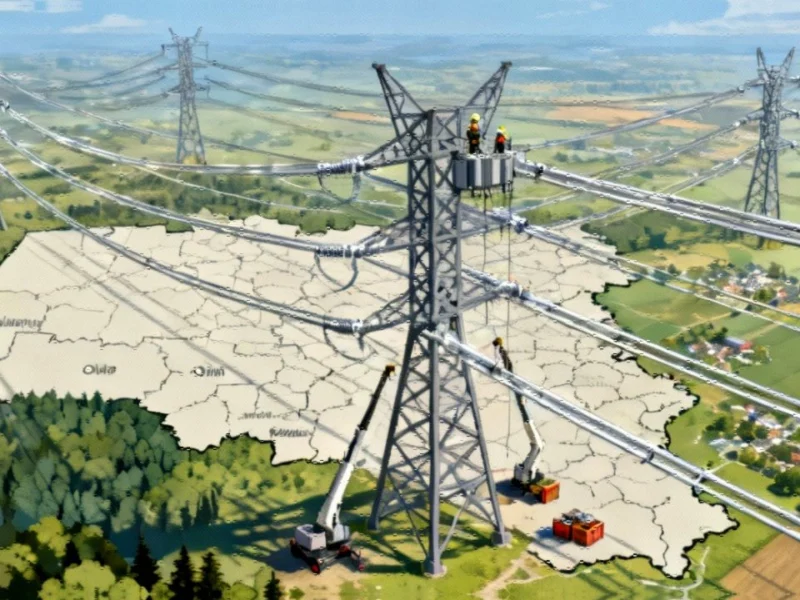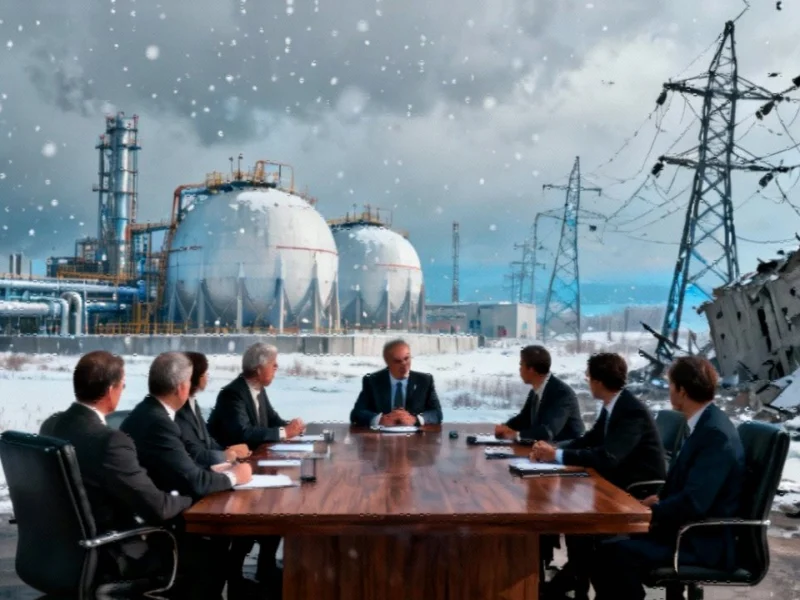The Grid Strain Crisis
As artificial intelligence transforms industries and reshapes the technological landscape, the massive energy consumption of AI data centers is creating unprecedented strain on America’s power infrastructure. This surge in electricity demand comes alongside other growing power needs from electric vehicle adoption, manufacturing reshoring, and increased cooling requirements during hotter summers. The convergence of these factors threatens both grid reliability and household budgets, with average power prices already jumping 9.5% this year and some states like Missouri experiencing staggering 38% increases.
Demand Flexibility: A Bipartisan Solution
Fortunately, a policy approach called “demand flexibility” offers a practical, cost-effective solution that’s gaining traction across political divides. This strategy essentially creates a dynamic energy market where consumers are rewarded for adjusting their power usage during peak demand periods. For households, this might mean running appliances during off-peak hours in exchange for lower rates. For businesses, it could involve temporarily scaling back operations or tapping into backup power sources when the grid is stressed.
The potential impact is substantial. According to a Duke University study published this year, adopting flexibility policies could add over 100GW of new capacity—equivalent to 30,000 utility-scale wind turbines or 50 Hoover Dams. This capacity could effectively meet the projected 100GW of new data center demand expected by 2035 while preventing costly infrastructure upgrades that typically drive up consumer rates.
State-Level Implementation Strategies
Different states are approaching this challenge with varied strategies that reflect their unique energy landscapes and political environments. North Carolina Governor Josh Stein recently established a taskforce specifically addressing skyrocketing energy demand, with flexible load structures as a primary consideration. Meanwhile, Texas has taken a more regulatory approach following the deadly 2021 winter storm, requiring large energy users like data centers to enable remote disconnection during emergencies and report backup generation capacity.
California’s path has been more complicated. Despite having the nation’s second-highest power rates, Governor Gavin Newsom recently vetoed legislation that would have required regulators to study demand flexibility, citing excessive workload concerns. However, advocates remain optimistic about passing acceptable legislation next year as the state grapples with increasing blackout risks during extreme weather events.
Utility Innovation and Resistance
The implementation of demand flexibility programs reveals an inherent tension within the utility sector. Energy entrepreneur Jigar Shah explains: “There’s a tension here between for-profit utilities with shareholders and keeping bills as affordable as possible.” Utilities traditionally earn returns on capital investments like new power plants and transmission lines, creating less incentive to maximize efficiency of existing infrastructure.
Despite this structural challenge, innovative programs are emerging nationwide. Rocky Mountain Power in Utah offers residents $300 per kWh for solar power captured by home battery storage systems, which the utility can access during peak demand. This approach has helped Utah maintain some of the lowest power bills in the country while increasing grid resilience. Similarly, Baltimore Gas Electric in Maryland provides rebates for smart thermostat installation and compensates EV owners for allowing utility access to their vehicle batteries as backup power.
International Precedents and Domestic Adoption Patterns
The concept of demand flexibility isn’t uniquely American. During the 2023 global energy crisis, the United Kingdom successfully implemented a smart meter program that rewarded households with bill discounts for reducing consumption during high-demand periods. Utilities provided 24-hour notices of upcoming “saving sessions,” allowing consumers to plan their energy reduction.
Interestingly, within the U.S., the vast majority of demand flexibility programs have been adopted in Republican states, primarily through rural electric cooperatives and municipal utilities. This bipartisan appeal stems from the policy’s practical benefits rather than ideological alignment, offering relief from soaring energy costs without massive infrastructure investment.
Data Center Responsibility and Grid Integration
As major contributors to growing energy demand, data centers face increasing pressure to develop proactive plans for grid management. Tim Profeta, co-author of the Duke study and executive in residence at Duke’s Nicholas Institute, notes that regulators and utilities can require flexibility plans in exchange for prioritized grid connection. “The biggest incentive is speed to interconnect to the grid,” he explains.
Data centers can contribute to grid stability through various means, including battery storage installations, backup generators, and workload scheduling that avoids peak demand periods. These approaches represent a fundamental shift from simply consuming power to becoming active participants in grid management, similar to how AI is reshaping workforce dynamics across multiple sectors.
The Broader Energy Context
Demand flexibility exists within a complex energy landscape where multiple solutions are needed simultaneously. While geothermal and other renewable sources will play crucial roles in long-term decarbonization, flexibility policies offer immediate relief for overburdened grids. The approach complements other technological innovations that are transforming how we produce and consume energy.
The current moment represents a critical juncture for energy policy. As Profeta observes, “That seems to be a very attractive concept, no matter where you are in the political spectrum.” With peak power demand projected to grow by 20% over the next decade, solutions that balance reliability, affordability, and sustainability have never been more essential.
Future Outlook and Implementation Challenges
Scaling demand flexibility nationwide faces several hurdles, including regulatory frameworks that don’t always reward efficiency, consumer education gaps, and technological integration challenges. However, the compelling economics and bipartisan appeal suggest rapid expansion in coming years. As governors nationwide seek answers to affordability concerns, many are realizing that forcing utilities to optimize existing infrastructure may be the most immediately viable solution.
The approach also aligns with broader efficiency trends across industries, where doing more with existing resources has become increasingly prioritized. Meanwhile, technology companies continue developing sophisticated energy management systems that can automatically respond to grid conditions, creating new opportunities for advanced automation in energy conservation.
As the energy sector evolves, strategic approaches must consider both immediate needs and long-term sustainability. This includes navigating complex geopolitical factors affecting energy markets while addressing emerging challenges like cybersecurity threats to critical infrastructure. Through this multifaceted approach, demand flexibility offers a promising path toward a more resilient, affordable energy future.
This article aggregates information from publicly available sources. All trademarks and copyrights belong to their respective owners.



